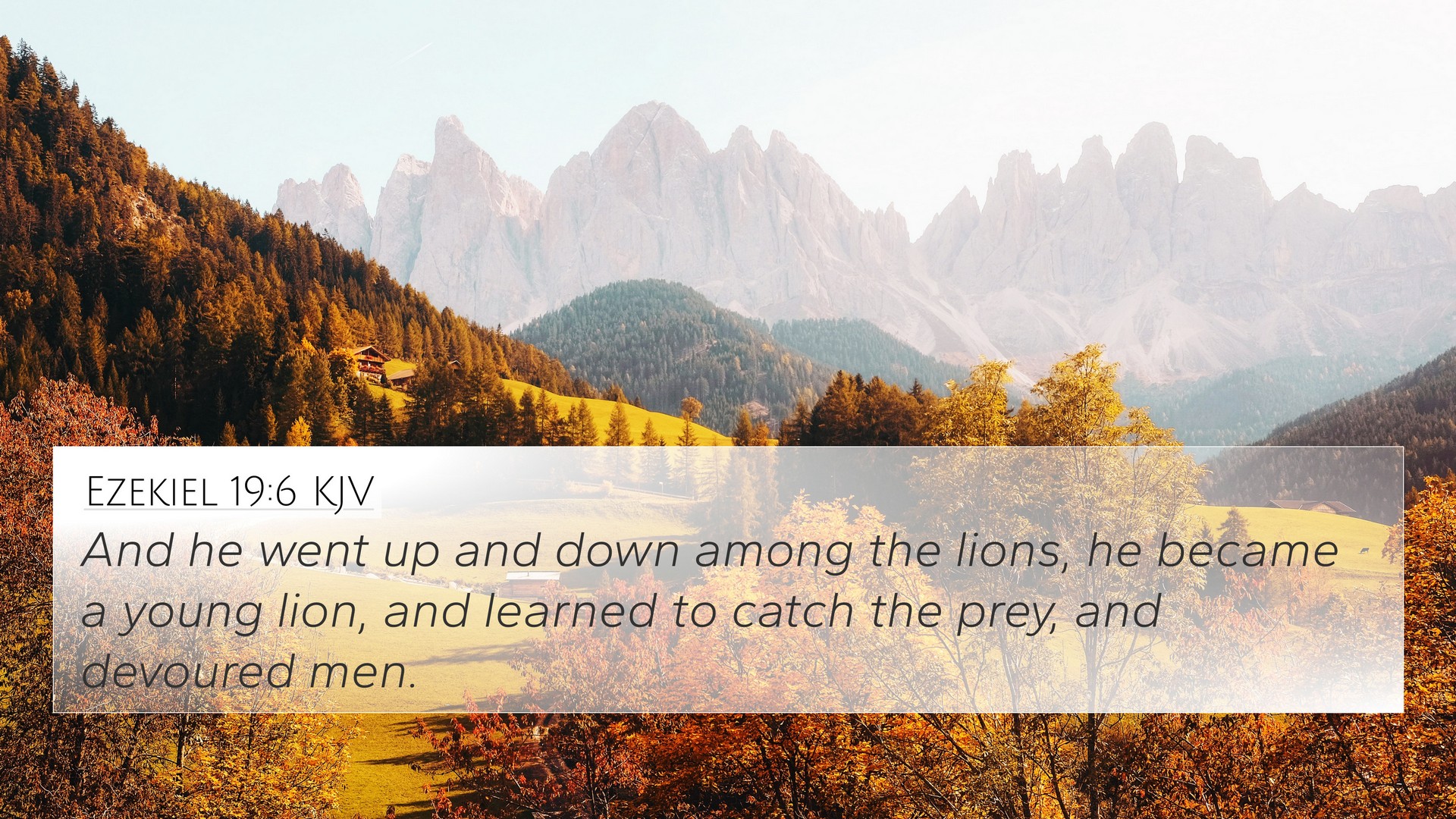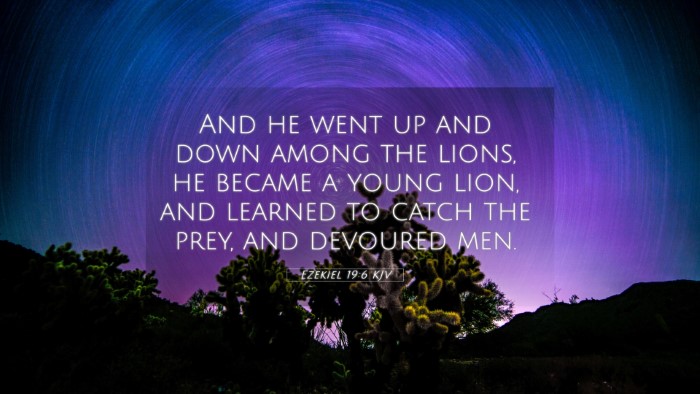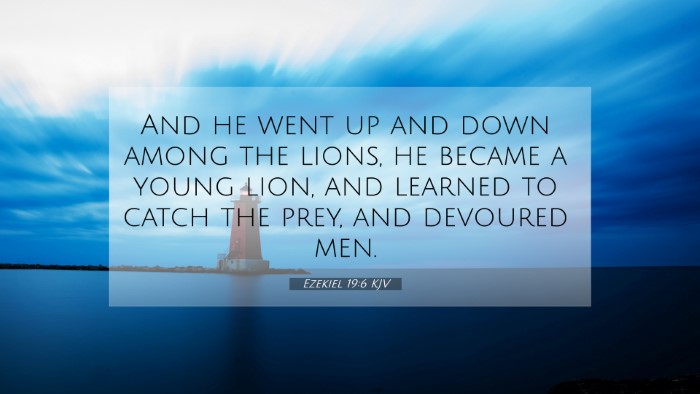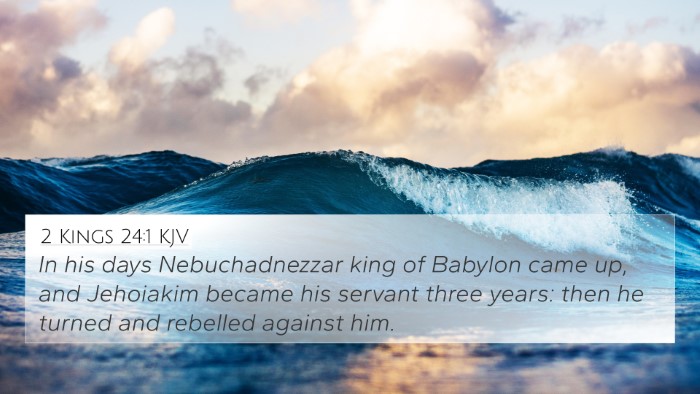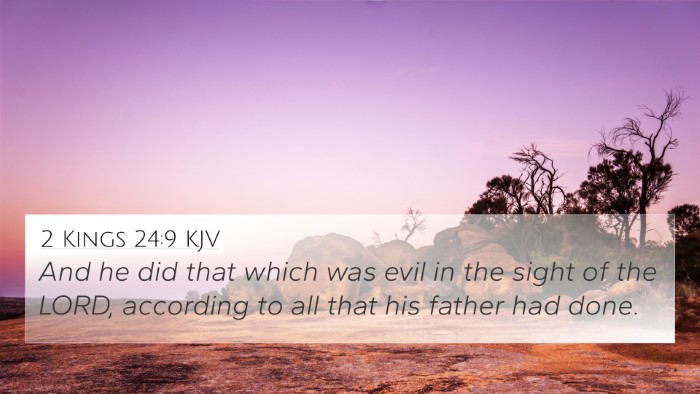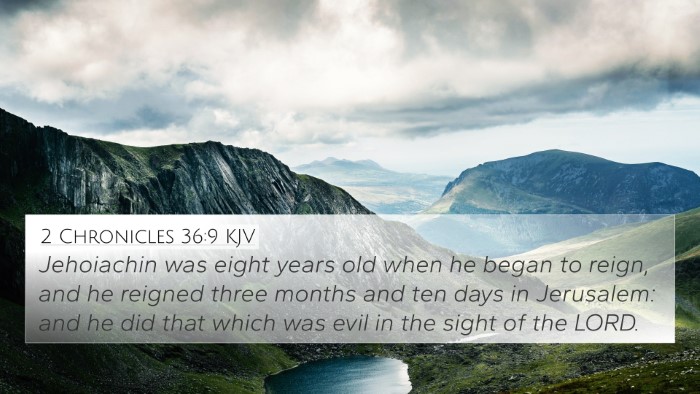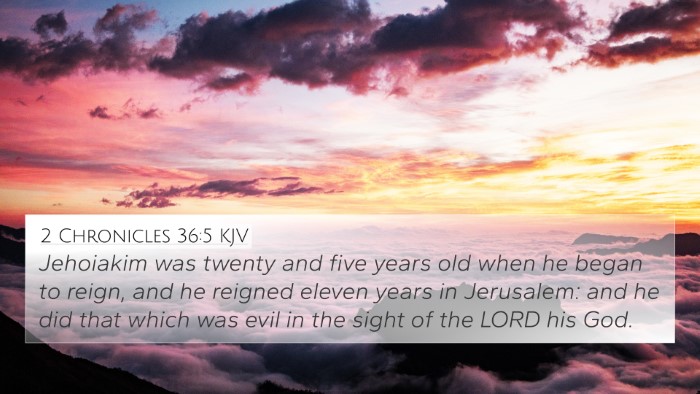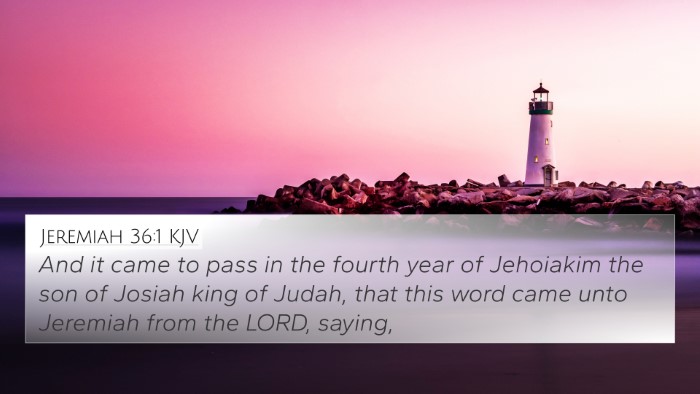Ezekiel 19:6 - Summary and Interpretation
Ezekiel 19:6 states: "And he went up and down among the lions, and became a young lion, and learned to catch the prey, and devoured men." This verse serves as a metaphorical depiction of leadership and its responsibilities, as explored in various public domain commentaries.
Meaning and Insights
The verse highlights themes of strength, ambition, and the consequences of one's actions, particularly in the context of a ruler or leader. Below are key insights drawn from the commentaries of Matthew Henry, Albert Barnes, and Adam Clarke:
- Matthew Henry:
Henry interprets this verse as portraying the rise of a leader who, through assertiveness and strength, learns to influence those around him. The lions symbolize the fierce challenges faced, while the ability to catch prey represents the necessity of acquiring skills for effective leadership.
- Albert Barnes:
Barnes emphasizes that the imagery of the young lion suggests both ferocity and a position of power. The leader, in his journey, must navigate moral dilemmas, caught between the desire for dominion and the ethical implications of his actions.
- Adam Clarke:
Clarke notes that the passage reflects on the nature of leadership and the instinctive drive to dominate. The learned skills of the young lion can be seen as a commentary on the necessity of wisdom and strategic foresight in governance.
Cross-References
This verse connects with several other Scriptures that echo similar themes of leadership, strength, and consequence. Here are some relevant cross-references:
- Genesis 49:9 - "Judah is a lion's cub; from the prey, my son, you have gone up." This verse also speaks to the strength of a leader emerging from a lineage of power.
- Proverbs 28:1 - "The wicked flee when no one pursues, but the righteous are bold as a lion." This compares righteousness with the boldness of a lion, paralleling the themes of courage in leadership.
- Isaiah 5:29 - "Their roaring is like a lion's, they roar like young lions; they growl and seize their prey; they carry it off and no one can rescue it." This emphasizes the predatory nature of those with power.
- Jeremiah 49:19 - "Behold, he shall come up like a lion from the tumult of the Jordan against the habitations of the strong." Here, the lion imagery reinforces the idea of approaching challenges with strength.
- Ezekiel 22:25 - "There is a conspiracy of her prophets in her midst, like a roaring lion tearing the prey; they have devoured lives." Similar themes of predation and leadership roles are present in both verses.
- Revelation 5:5 - "But one of the elders said to me, 'Weep no more; behold, the Lion of the tribe of Judah, the Root of David, has conquered.'" This connects the concept of a lion with ultimate victory and authority.
- 1 Peter 5:8 - "Be sober-minded; be watchful. Your adversary the devil prowls around like a roaring lion, seeking someone to devour." This warns about the predatory nature of evil, paralleling the youthful ambition in Ezekiel's metaphor.
Thematic Connections
The themes explored in Ezekiel 19:6 can be linked to various broader Biblical concepts. The nuances of leadership demonstrated here offer rich thematic parallels:
- Leadership Challenges: Ezekiel’s depiction reflects the difficulties faced by leaders, a common theme explored throughout Scripture.
- Moral Responsibility: The moral implications of power and influence are crucial in understanding the effects of leadership on a community.
- Desire for Strength: The desire to overcome challenges is evident throughout the Bible, represented through the lion metaphor.
Conclusion
In summary, Ezekiel 19:6 encapsulates powerful themes of ambition, leadership, and the consequences of one's actions, as interpreted by respected commentaries. Understanding its context and the cross-references enhances our appreciation of Biblical texts and their interconnectedness in exploring human nature and divine truth.
This exploration not only enriches our personal study but can also serve as a guide for sermon preparation and thematic Bible studies. By utilizing Bible concordance and cross-reference Bible study methods, one can deeply connect various scriptures to uncover more profound insights.
